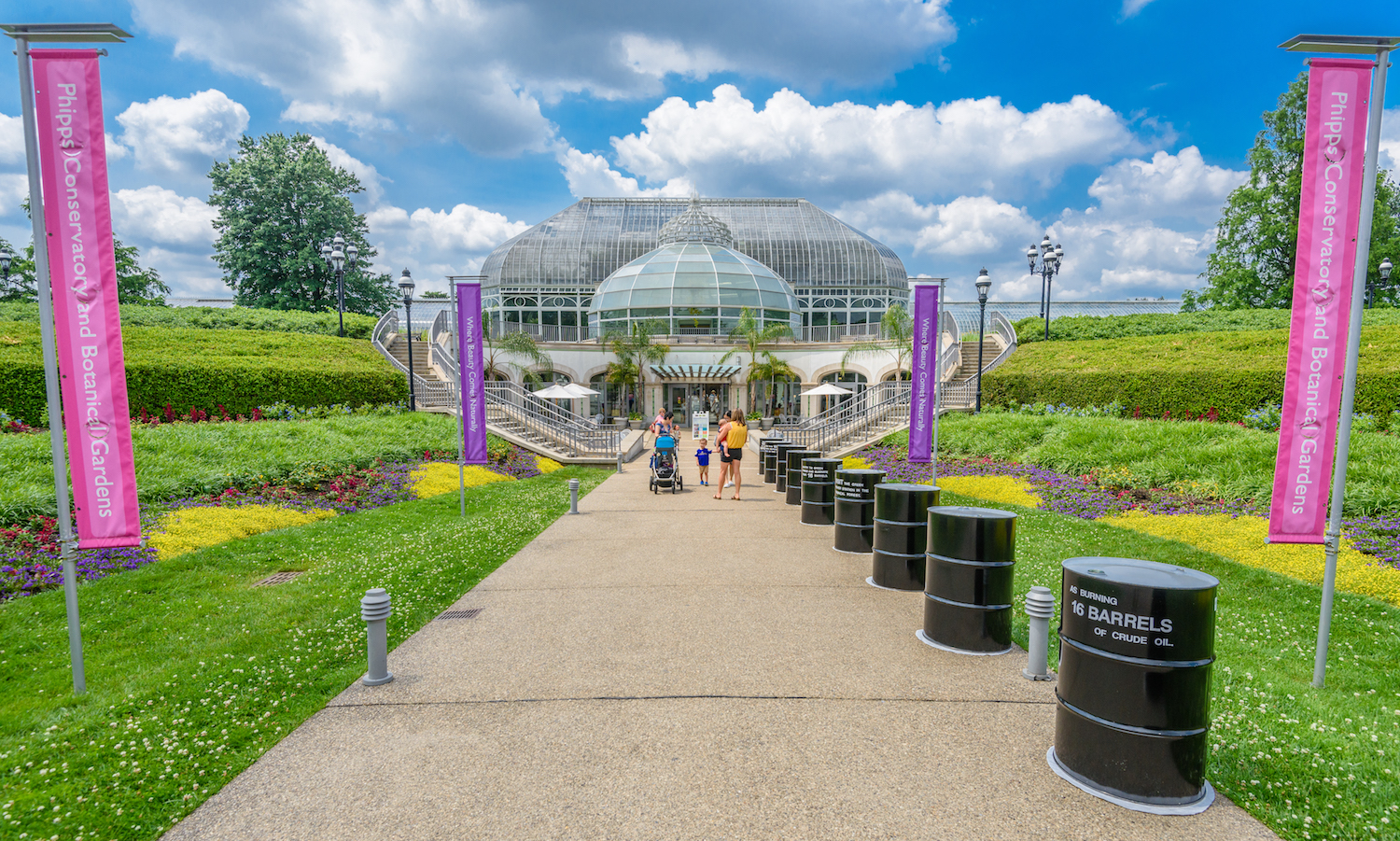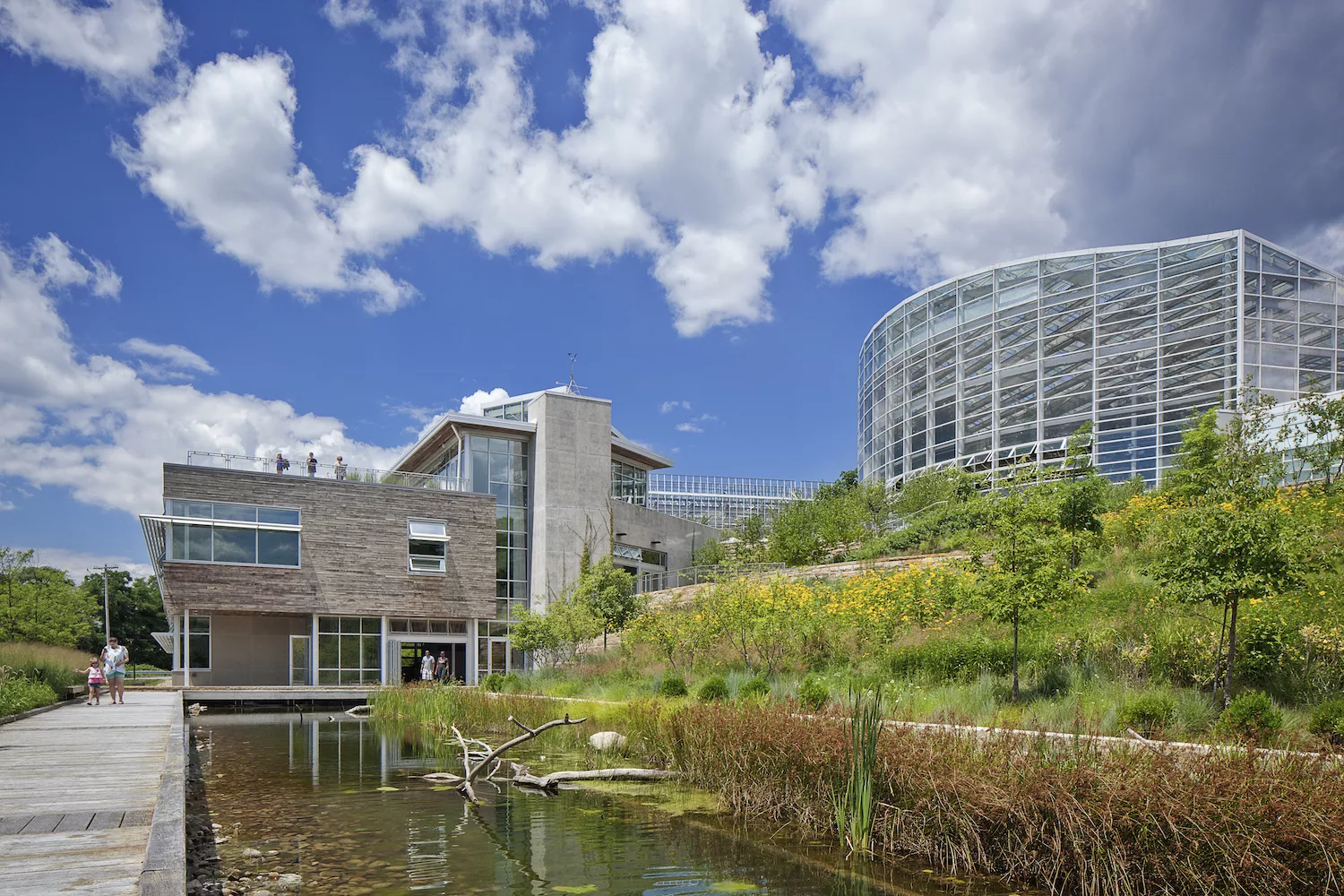When Phipps Conservatory and Botanical Gardens opened in Pittsburgh in 1893, most people thought there was no limit to the amount of natural resources we could use or the amount of pollution we could produce. In fact, people thought we would conquer nature. Our original conservatory is a great example of that type of mindset—a single-paned glass building designed to grow tropical plants in a temperate climate. From an energy perspective, this is one of the least efficient buildings imaginable. Today, sustainability is at the heart of everything we do, and the shift in our priorities all started with a box of floor tiles.
A turning point
In 1993, after the steel economy collapsed in the region, Phipps was transferred from city management to a nonprofit organization. One of the first things we realized was that in order for Phipps to be successful, we needed to find new ways of generating revenue and address a lack of visitor amenities. We started by renovating the front entrance, creating a welcome center, and adding a café and gift shop.
At the time, we were not focused on green buildings or sustainability. Then, one of our consultants told us about a new certification program that was just being launched, called LEED. We didn’t realize how much buildings contribute to global energy and water use, as well as pollution. We care about the environment, so we decided our buildings should reflect that commitment.
We decided to pursue LEED certification for our welcome center. LEED is a very important green building rating system, managed by the U.S. Green Building Council, that looks at site development, as well as water, energy, and resource efficiency. Buildings receive points for achieving certain benchmarks and the more points that are accumulated, the higher the certification.
One day during construction, I noticed a worker installing floor tiles in the café from a box labeled “made in Turkey.” I was surprised because I thought we were supposed to use local materials. When I made inquiries about it, I was told not to worry, because we had “already received the points for local materials.” I was not happy with that answer; we were pursuing LEED because we thought it was the right thing to do, not to just get our points and then return to the old way. That was a major turning point for us. From that point on, we decided we would do whatever we thought was right—whether we got points or not—and we would carry this through to our operations and programs, too.
Embracing the journey
Along the way, we hit some significant milestones. In 2005, we switched to 100 percent renewable energy campus-wide. A year later, we eliminated plastic disposable serviceware. In 2009, we eliminated bottled water and started to responsibly source the food we served in our café. Then, we began to offset all of the carbon we produce to heat our buildings. In 2011, we stopped selling junk food and soda in our café. In 2015, we moved our endowment investments from fossil fuels to renewable energy investments. And on and on.
As we moved through our sustainability journey, we began to pursue the Living Building Challenge, the most rigorous green building certification system in the world. In 2012, we opened the Center for Sustainable Landscapes (CSL, pictured above)—which is a culmination of all of our efforts. The CSL is the first and only building to achieve the highest rating in four of the most significant building rating systems that focus on human and ecological health: the Living Building Challenge, LEED Platinum, WELL Building Platinum, and 4 Stars Sustainable SITES.
Too often, we focus on first costs and fail to align our actions with our values. Take the CSL, for example: It cost approximately 20 percent more than a cheap big-box building and not much more than a high-end office building. However, it is a much better and healthier place to work and, in the long run, it will last longer. It also produces all of the energy that it uses in a year and recycles all of its storm and sanitary water, so it frees us from the uncertainty of the market and will easily outperform conventional buildings in the long run.

The LEED-certified welcome center at Phipps Conservatory and Botanical Gardens.
Rethinking management for a better world
We believe it is important to walk the talk in everything we do. How many organizations do you know of that say they are committed to the environment, yet you are served bottled water and food on disposable serviceware when you visit their facilities? Our employees, our customers, and all of our other constituents can see through our actions.
In her work, thought leader Carol Sanford describes four different paradigms for interacting with the world. In the extractive model, it is all about “me.” Individuals don’t care who or what they hurt to get what they want. The world is seen in fragments, there for the taking. This is colonialism.
In the “less bad” model, we see a shift in thinking from “me” to “us.” An individual in this paradigm sees the world as fragmented, but recognizes the fragments as interconnected and tries to stabilize them. This is where the environmental movement started, as exemplified by the “reduce, reuse, recycle” hierarchy and the first green building certification systems.
The “do good” model is also about “us,” but recognizes reciprocity. An individual in this model sees the world as fragmented but interconnected and tries to improve it. Some later iterations of green building programs fit this model.
The final paradigm is regenerative. It is about “us” and seeing the world as a whole interconnected system rather than separate fragments. In a regenerative world, individuals move beyond thinking about themselves in isolation and see the larger social and natural systems that we collectively need to survive. This is the paradigm we need to adopt for the long-term health of ourselves and the planet.
The bottom line
We will not conquer nature. We have to change, and we have to lead. The challenges we face are not technology problems; we have the means to solve many of our human and ecological health challenges today. They are people problems, and they speak to a lack of will to do what we know is right. Those of us leading organizations must demonstrate the will to lead regeneratively so that we can inspire others to follow.
(Images courtesy of Phipps Conservatory and Botanical Gardens)





